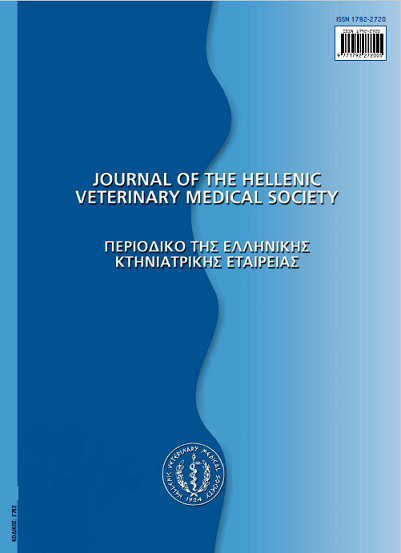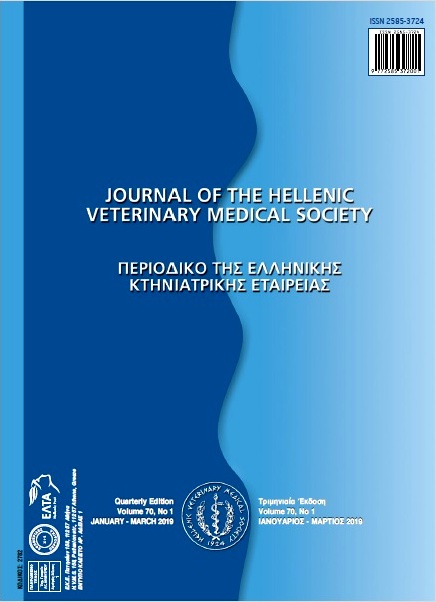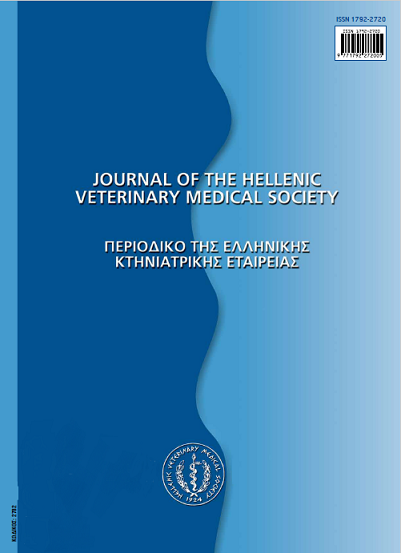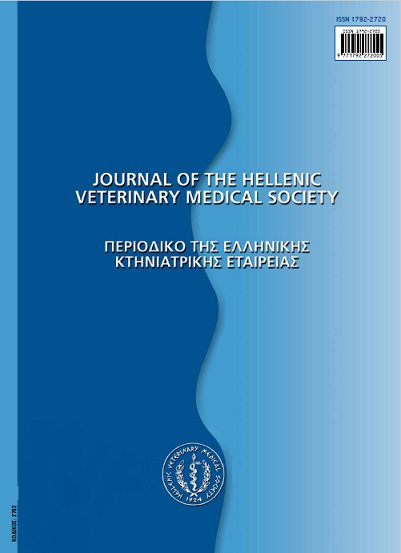Ανοσιακοί και άλλοι παράγοντες που επηρεάζουν την ανθεκτικότητα του προβάτου στα γαστρεντερικά νηματώδη παράσιτα

Περίληψη
Η μόλυνση των μικρών μηρυκαστικών με γαστρεντερικά νηματώδη παράσιτα αποτελεί ένα σημαντικό πρόβλημα με επίπτωση στην παραγωγή κρέατος και γάλακτος. Η αθρόα χορήγηση αντιπαρασιτικών φαρμάκων, στα πλαίσια των προγραμμάτων αποπαρασιτισμού, συνετέλεσε στην ανάπτυξη ανθεκτικών στελεχών παρασίτων. Παράλληλα, η απαίτηση των καταναλωτών για προϊόντα απαλλαγμένα από φάρμακα οδήγησε στην υιοθέτηση εναλλακτικών μεθόδων αποπαρασιτισμού, τα οποία περιλαμβάνουν την επιλεκτική αναπαραγωγή ζώων ανθεκτικών στις παρασιτώσεις. Η ενεργοποίηση του ανοσιακού συστήματος και κατά συνέπεια η ενίσχυση της ανθεκτικότητας έναντι των γαστρεντερικών νηματωδών παρασίτων βασίζεται στην ενεργοποίηση συγκεκριμένων γονιδίων του ξενιστή. Η γονιδιακή ανάλυση έχει αποκαλύψει περιοχές (QTLs), οι οποίες επηρεάζουν την ανθεκτικότητα ή την ευαισθησία του προβάτου στις παρασιτικές μολύνσεις τόσο μεταξύ των διαφορετικών φυλών όσο και μεταξύ διαφορετικών ατόμων της ίδιας φυλής. Ο ρόλος των κυτοκινών και των Τ βοηθητικών κυττάρων (Th) ενισχύεται καθώς έρευνες έχουν αποδείξει τη συσχέτιση των Th2 κυττάρων με ανθεκτικότητα και των Th1 με ευαισθησία έναντι των γαστρεντερικών νηματωδών παρασίτων. Πρόσφατα δεδομένα αναδεικνύουν ακόμη περισσότερο τη σημασία των Τ ρυθμιστικών κυττάρων (Treg) και των Th17 βοηθητικών κυττάρων στην απάντηση του ανοσιακού συστήματος έναντι των παρασιτώσεων. Ειδικά μόρια προσκόλλησης, τα οποία παράγονται στον αυλό του εντέρου σε επαρκείς ποσότητες, υποβοηθούν την ανοσία και μειώνουν τη βαρύτητα των κλινικών συμπτωμάτων στα πρόβατα. Επιπλέον, οι ανοσοσφαιρίνες IgΑ και IgΕ έχουν συσχετιστεί θετικά με αυξημένη ανθεκτικότητα των μηρυκαστικών έναντι των γαστρεντερικών νηματωδών. Σε αρκετές περιπτώσεις παρασιτώσεων όπου καταγράφηκε υψηλός αριθμός εωσινόφιλων και μαστοκυττάρων στο εντερικό επιθήλιο, τα ζώα εμφάνισαν μειωμένο αριθμό παρασιτικών στοιχείων στα κόπρανα τους. Τα γονίδια του Μείζονος Συμπλέγματος Ιστοσυμβατότητας αναφέρονται ως πιθανοί δείκτες ανθεκτικότητας ή ευαισθησίας. Ένζυμα όπως οι χιτινάσες ενισχύουν την ικανότητα αντίστασης των ξενιστών. Η διατροφή των ζώων είναι ακόμη ένας σημαντικός παράγοντας που επηρεάζει την ανοσιακή απόκριση έναντι των παρασιτώσεων στο πρόβατο, τόσο συστηματικά όσο και τοπικά. Σχετικά με την επίδραση των ελεύθερων ριζών οξυγόνου, ορισμένοι ερευνητές υποστηρίζουν την άμεση επίδρασή τους έναντι των παρασίτων, οδηγώντας σε φυσική μείωση της μόλυνσης, ενώ άλλοι την έμμεση μείωση της τοπικής ανοσίας του εντέρου. Συνεπώς, η ανίχνευση γονιδίων που σχετίζονται με ανθεκτικότητα ή ευαισθησία στα γαστρεντερικά νηματώδη παράσιτα αποτελεί σημαντική προοπτική κ αι συμβαδίζει με τις σύγχρονες απαιτήσεις.
Λεπτομέρειες άρθρου
- Πώς να δημιουργήσετε Αναφορές
-
ARSENOPOULOS, K., SYMEONIDOU, I., & PAPADOPOULOS, E. (2018). Ανοσιακοί και άλλοι παράγοντες που επηρεάζουν την ανθεκτικότητα του προβάτου στα γαστρεντερικά νηματώδη παράσιτα. Περιοδικό της Ελληνικής Κτηνιατρικής Εταιρείας, 68(2), 131–144. https://doi.org/10.12681/jhvms.15597
- Τεύχος
- Τόμ. 68 Αρ. 2 (2017)
- Ενότητα
- Review Articles

Αυτή η εργασία είναι αδειοδοτημένη υπό το CC Αναφορά Δημιουργού – Μη Εμπορική Χρήση 4.0.
Οι συγγραφείς των άρθρων που δημοσιεύονται στο περιοδικό διατηρούν τα δικαιώματα πνευματικής ιδιοκτησίας επί των άρθρων τους, δίνοντας στο περιοδικό το δικαίωμα της πρώτης δημοσίευσης.
Άρθρα που δημοσιεύονται στο περιοδικό διατίθενται με άδεια Creative Commons 4.0 Non Commercial και σύμφωνα με την άδεια μπορούν να χρησιμοποιούνται ελεύθερα, με αναφορά στο/στη συγγραφέα και στην πρώτη δημοσίευση για μη κερδοσκοπικούς σκοπούς.
Οι συγγραφείς μπορούν να καταθέσουν το άρθρο σε ιδρυματικό ή άλλο αποθετήριο ή/και να το δημοσιεύσουν σε άλλη έκδοση, με υποχρεωτική την αναφορά πρώτης δημοσίευσης στο J Hellenic Vet Med Soc
Οι συγγραφείς ενθαρρύνονται να καταθέσουν σε αποθετήριο ή να δημοσιεύσουν την εργασία τους στο διαδίκτυο πριν ή κατά τη διαδικασία υποβολής και αξιολόγησής της.








